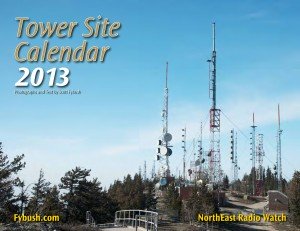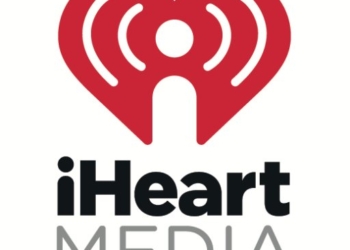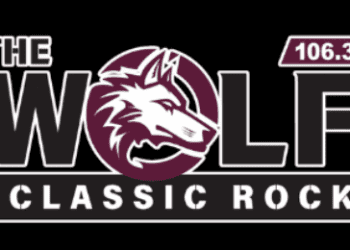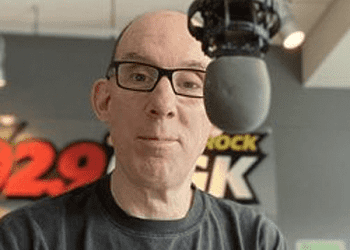SOMEWHERE OVER MISSOURI – Another NAB Show goes into the history books today in Las Vegas, and now that we’re away from the bustle of the floor and the interminable cab lines and at least temporarily disconnected from the rapid-fire flood of press releases that barrage the inbox of anyone who’s ever registered for the show as media, it’s time to take a few moments for our annual exercise of trying to make sense of what we saw and heard at the show.
We’d need a staff far larger than your lone editor to really even begin to capture everything that comes out of a show this big. With an announced 92,000 attendees, NAB is really a small city unto itself, and like any small city, it’s a collection of much smaller neighborhoods. If you’re at NAB as a working engineer, your world revolves around the equipment vendors on the show floor and (if you’re lucky enough to have an employer still willing to pay for a full registration) the technical papers upstairs. If you’re at NAB as a station owner, you may never even set foot on the show floor, instead spending your week in a different warren of meeting rooms upstairs hearing from programmers and consultants and lawyers and regulators, with an occasional jaunt across the alley to the Hilton (which isn’t the Hilton anymore, but will always be “the Hilton” anyway) for tightly-scripted awards luncheons and breakfasts. If you come to Vegas as a station broker, you probably never even set foot in the convention center at all, instead entertaining clients (actual and potential) across Paradise Road in the cushier confines of the Wynn, Encore or Bellagio. If you’re at NAB as a vendor, your week is four long days bounded by the carpeted edges of a booth on the floor, followed by four long nights of entertaining clients.
And that’s just the small set of neighborhoods of broadcasters who make up the “B” in NAB that used to be the entirety of the convention back in the days when 8,000 people gathering in Chicago was a good turnout. NAB doesn’t break out attendance by category, but those of us who’ve been trekking to the desert for more than just the last few years know that most of the NAB Show is really a media-production convention covering a lot of ground that no longer fits under the umbrella of “broadcasting” at all.
But you don’t read NERW because you want to know about the state of the art in DSLR video or 200-inch 4K displays or media archiving and storage or technology for worship. And so here’s what we saw as we used our time in Las Vegas to move through some of the more constricted (but still awfully busy) neighborhoods of broadcast engineering, management and some of the points nearby:
The Show Floor: Some years at NAB are revolutionary ones, when you can almost see the entire industry shift at once to something new like digital automation systems or audio-over-IP networking or compact solid-state transmitters. This was not one of those years: very little, if anything, on display in radio’s corner of the Central Hall created the sort of “you’ve gotta see this” buzz that marks the most revolutionary
shows. With a flood of new translators and LPFM signals on the way, there was plenty of new product to serve those broadcasters and other smaller FM operators, including lots of rack-mounted compact transmitters in the under-10 kW category (many of them rebranded European offerings) and some new FM antennas designed to be field-adjustable to a desired frequency. In the studio, interconnection was the buzzword, with several vendors announcing partnerships to ensure that their products will speak to each other over AOIP networks using newer protocols such as the European Ravenna standard. This was a year of tweaks, not mammoth new developments, among the big processing companies.
(One of the more significant changes where NERW-land is concerned is 25-Seven, the time-compression and delay folks who got their start in the Boston area and are now part of the Cleveland-based Telos Alliance. It was also a very good year for Telos/Omnia’s Frank Foti, who won the NAB’s radio engineering achievement award, in no small part based on the reputation he burnished as the chief engineer of New York’s Z100 three decades ago.)
For whatever it’s worth, this was the year of the drone (or, if you prefer, “unmanned aerial vehicle”) at NAB, as several vendors drew big booth crowds with demonstrations of compact and surprisingly inexpensive little remote-control quad-copters that can carry digital cameras a few hundred feet in the air. Will a UAV become standard issue in every TV newsroom’s tool kit? (And can we find someone to loan us one to get some new angles in our tower photos?)
The Regulatory Arena: This was hardly the first NAB Show at which the leadership picture at the FCC was suddenly uncertain, but it did feel as though rather more was at stake this time than usual as broadcasters wait to see who’ll be tapped to succeed outgoing FCC chairman Julius Genachowski. Genachowski’s focus on new media and reluctance to focus on traditional broadcasting issues had been a source of friction at recent shows, and it’s unlikely that he’ll be missed by many at NAB.
But for whoever’s next in the big seat at the Portals, there’s plenty of work to be done and lots of broadcasters pushing hard to make something actually happen. In our Tuesday update, we told you about the remarkable advocacy commissioner Ajit Pai is displaying when it comes to the issues AM broadcasters have been pushing for years with little FCC response. Whether Pai will get any traction with some of those proposals depends almost emtirely on whether they can find their way onto the next Commission’s agenda, and that depends almost entirely on who succeeds Genachowski.
Over on the TV side, broadcasters are waiting to see how the controversial plan to repack the UHF spectrum will actually play out. This year’s show brought many more questions about how the incentive auctions will work – but little in the way of new definitive answers. And that in turn played out against the backdrop of bigger questions about the future of over-the-air TV. As you’ve no doubt been reading, Fox Television Stations floated a trial balloon about the possibility of moving its broadcast network to cable-only distribution to preserve revenue that’s now threatened by the advent of new services like Aereo. For now, at least, that doesn’t seem like something that will really happen in the next few years – but it’s becoming increasingly clear that the old-line TV networks are acutely aware that in the next decade or so, they’ll have to become much more flexible in the ways they deliver their product to consumers who increasingly see “watching TV” as an old-fashioned option for video delivery.
(Repacking of the spectrum also played a role on the engineering side of things, with many transmitter and antenna manufacturers telling us they’re in a lull now in their TV sales as stations wait to see where they’ll end up when the dust settles.)
Genachowski’s successor will also confront some other sticky issues, including pressure to more comprehensively address a patchwork of rules governing how many TV stations one owner can control in a local market – and that eternal question of newspaper-TV crossownership, which seems likely to still be under consideration at the FCC even as the last daily print newspaper folds.
We spent some of our final hours at the show sitting in on some of Wednesday morning’s sessions on emergency communications. If you’re a radio or TV broadcaster or cable company trying to make sense of all the recent changes in EAS rules, you’re not alone. Industry leaders acknowledge they’re still tweaking aspects such as the sometimes-balky IPAWS system (for distributing emergency alerts over the internet) and trying to update rules that govern issues such as whether cable companies should override broadcast signals to carry EAS messages that are often of less value to viewers than the local stations’ news updates being overriden.
We also heard from New York State Broadcasters Association president Dan Donovan, who shared his praise for the way TV and especially radio stations helped residents of New York City and vicinity survive Sandy’s wrath last fall. Donovan says there’s still a lot of work to be done when it comes to ensuring that broadcasters have access to fuel supplies to keep operating during emergencies, and he’s pushing FEMA and state officials to work harder to make sure broadcasters have the resources they need to help keep emergency information flowing to the public.
Station Transactions: Perhaps the biggest news (at least for NERW-land) was what didn’t happen – at least as of Wednesday afternoon, there’d been no white smoke from the chimneys at the Wynn, Encore or Bellagio announcing the long-expected sale of Merlin Media’s WWIQ (106.9) in the Philadelphia market, whether to CBS Radio or anyone else. Nor were there many other blockbuster deals announced during the show (in fact, the biggest one we heard about before leaving Las Vegas was in…Lima, Ohio; while we were in the air, news broke of Sinclair’s deal to buy Fisher’s TV stations out west and of the sale of a Los Angeles class A FM that will be going Chinese.)
If full-power radio has been fairly stable where ownership is concerned, brokers are still keeping plenty busy with translators. The recent thawing of the long freeze of the 2003 FM translator applications means plenty of new construction permits will soon be on the market, and smart brokers (and even smarter station owners) are moving quickly to make deals, knowing it could be a long while before another window produces any new translators for sale. That’s putting some upward pressure on translator prices; one broker tells us the going rate in medium-sized markets is now hovering around one dollar per potential listener within the 60 dBu contour, which can easily mean upper five figures for many translator CPs.
*As we said at the start of our column this week, we can’t possibly be everywhere at NAB – and so we’re eager to hear from you, too. If you were at NAB, drop us a line with your impressions, or weigh in below in our comments section – and even if you weren’t in Vegas, we’d love to hear how the state of the industry looks from your window this spring. (It can’t be much more turbulent than the bumpy air we’re hitting right now on our flight back east!)
We’ll present some of your views in Monday’s NERW, as well as catching up on some big headlines back home, including the fallout from Jon Rish’s break with WEEI’s Red Sox network, a format change in southern Ontario that takes Corus’ “Vinyl 95.3” to AC “Fresh,” a new news director in New York City, and the surprise return of a heritage callsign to Massachusetts.
Thanks for reading and supporting NERW…your word of mouth is the best promotion we have, so if you’ve enjoyed our NAB coverage and found it useful, please tell your colleagues and friends (we’ll even set them up with a trial subscription if a current subscriber recommends them)– and we’ll do this all again back in Vegas for NAB 2014 and NERW’s 20th anniversary!
 *It’s 2013! Do you have your 2013 Tower Site Calendar yet? It can be on your wall in just a few days, if you order right now!
*It’s 2013! Do you have your 2013 Tower Site Calendar yet? It can be on your wall in just a few days, if you order right now!
This is the 12th edition of our annual calendar, which features photos of broadcast towers taken by Scott Fybush on his travels.
The 12-month wall calendar boasts a full-color photo each month of a well-known broadcast transmitter site.
This year’s edition includes sites in Florida, Wisconsin, Kentucky, California, Iowa, Idaho, Las Vegas, Colorado, Boston, Cleveland, Albuquerque, upstate New York and western Massachusetts. We’ve also redesigned the calendar to make it more colorful (don’t worry; the pictures are still pristine) and make the spiral binding our standard binding — your calendar will hang even better on your wall now! And of course, we still have the convenient hole for hanging.
Order 20 or more for a 10% discount! And while you’re at the Fybush.com store, check out the new National Radio Club AM Log and the final stash of FM Atlas editions.
For more information and to order yours, click here!






